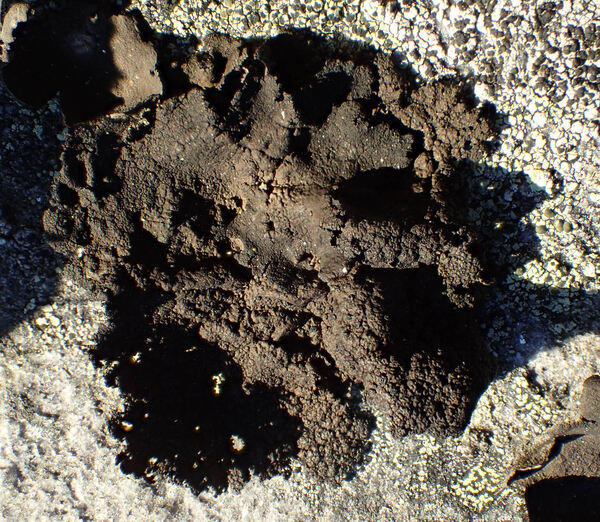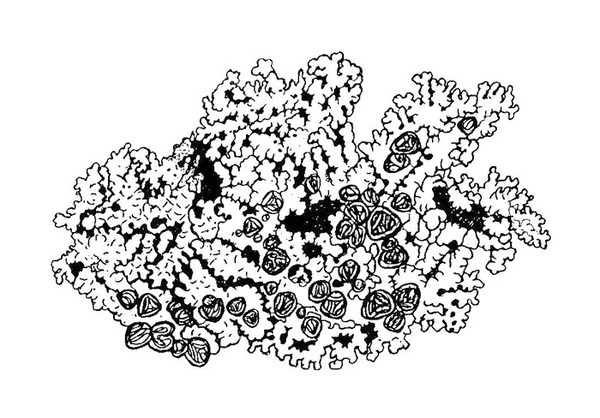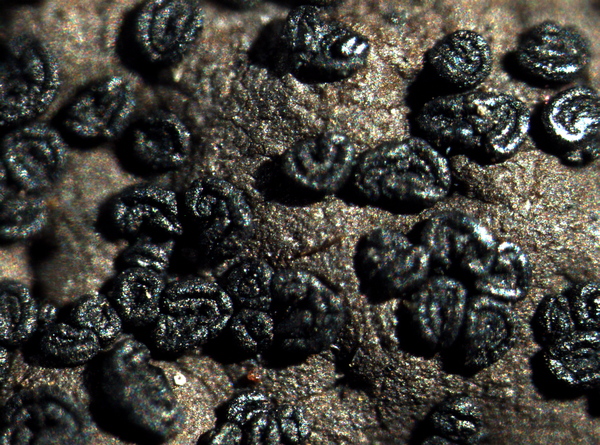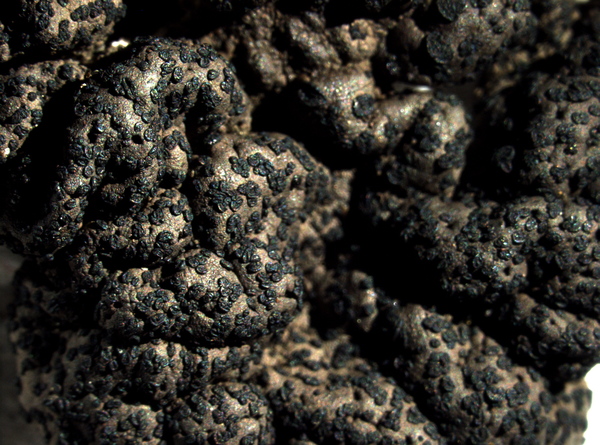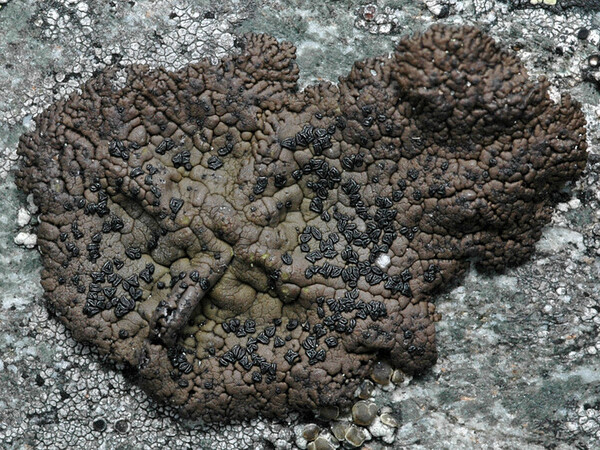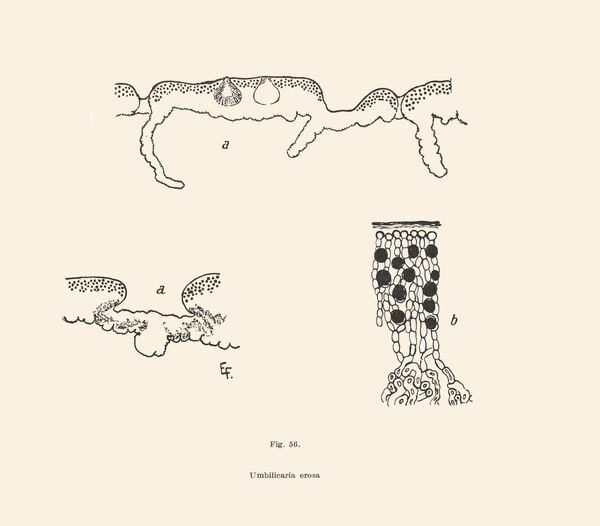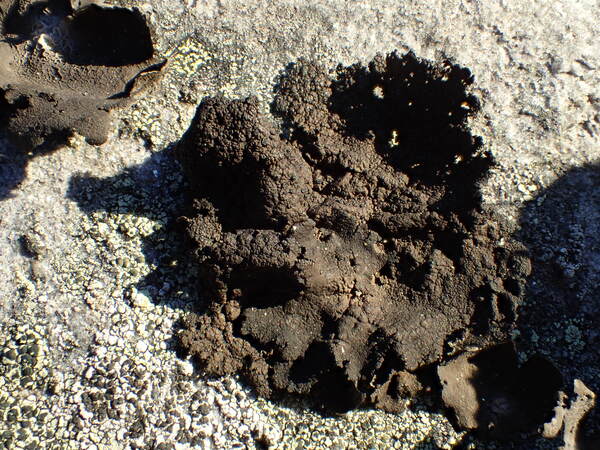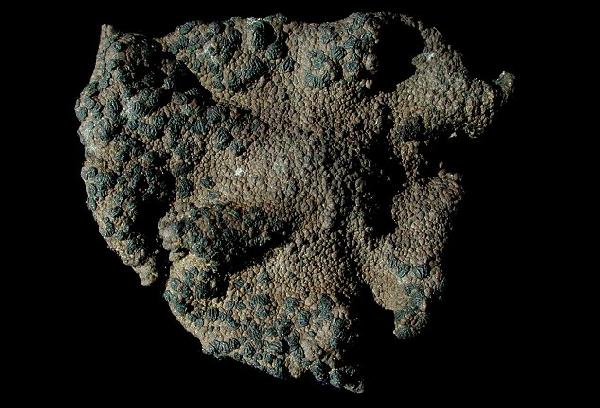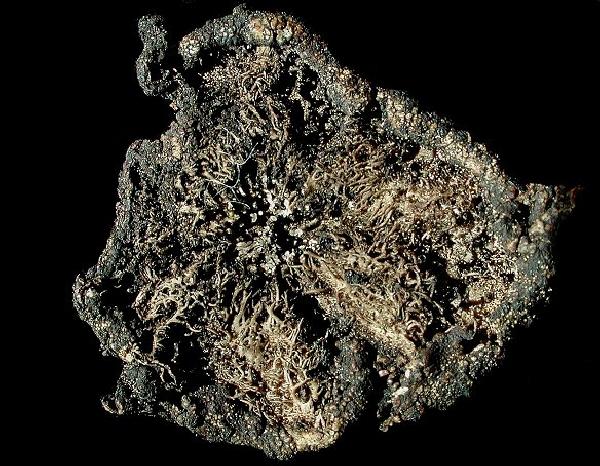Umbilicaria torrefacta (Lightf.) Schrad.
Spicil. Fl. Germ., 1: 104, 1794. Basionym: Lichen torrefactus Lightf. - Fl. Scot., 2: 862, 1777.
Synonyms: Gyrophora erosa (Weber) Ach.; Gyrophora erosa var. torrefacta (Lightf.) Th. Fr.; Gyrophora torrefacta (Lightf.) Cromb.; Gyrophora torrida (Ach.) Röhl.; Umbilicaria erosa (Weber) Ach.; Umbilicaria torrida (Ach.) Nyl.
Distribution: N - Ven, TAA, Lomb, Piem (Isocrono & Falletti 1999, Isocrono & al. 2003, Isocrono & Piervittori 2008), VA (Piervittori & Isocrono 1999, Matteucci & al. 2015c). S - Bas (Potenza & al. 2014), Cal (Tretiach 1993, Puntillo 1996, Potenza & al. 2011).
Description: Thallus foliose-umbilicate, dorsiventral, monophyllous, thick, rigid, irregular in outline, deeply incised, (2-)6–7(-12) cm diam., with lacerate and distinctly perforate, undulating margins, the edges often up- or down-turned. Upper surface uniformly dark brown, smooth or rimose-warted, the umbo slightly raised and with a few radial folds. Lower surface pale brown to brown-black, smooth to scabrous, with well-developed trabeculae radiating from the umbilicus; rhizinomorphs sparse, simple, cylindrical; thalloconidia absent. Upper cortex 13–20 µm thick; medulla white; lower cortex 30–46 µm thick, scleroplectenchymatous. Apothecia common, circular to star-shaped, black, gyrodisc, 0.5-2(-3) mm across, semi-immersed in depressions of the upper surface, usually between ridges. Asci 8-spored, elongate-clavate, thick-walled, with an amyloid apical dome, Umbilicaria-type. Ascospores 1-celled, hyaline, ellipsoid, 7-12 x 5-7 µm. Photobiont chlorococcoid. Spot tests: K-, C+ red, KC+ red, P-. Chemistry: medulla with gyrophoric and umbilicaric acids.Note: an arctic-alpine, circumpolar lichen found on siliceous rocks, most frequent above treeline. An earlier record from Emilia (see Nimis 1993: 721), being dubious, is not accepted here; several records from the Alps also need confirmation.
Growth form: Foliose, umbilicate
Substrata: rocks
Photobiont: green algae other than Trentepohlia
Reproductive strategy: mainly sexual
Commonnes-rarity: (info)
Alpine belt: rare
Subalpine belt: extremely rare
Oromediterranean belt: extremely rare
Montane belt: absent
Submediterranean belt: absent
Padanian area: absent
Humid submediterranean belt: absent
Humid mediterranean belt: absent
Dry mediterranean belt: absent
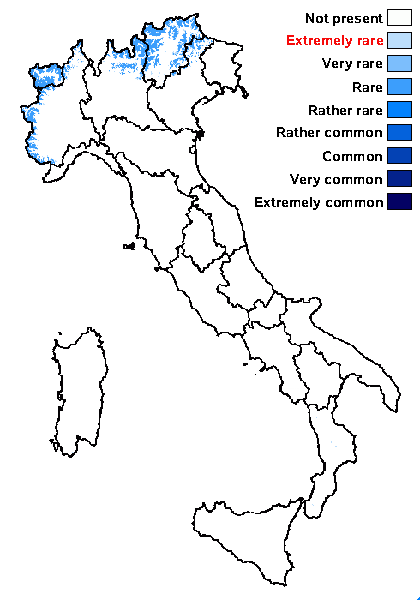
Predictive model
Herbarium samples


P.L. Nimis; Owner: Department of Life Sciences, University of Trieste
Herbarium: TSB (27681)
2003/03/17
apothecia
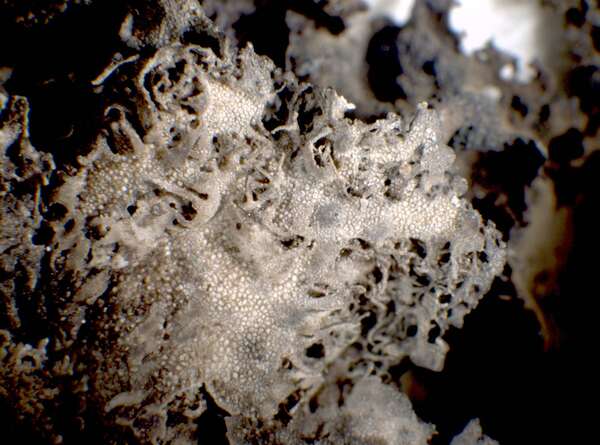

P.L. Nimis; Owner: Department of Life Sciences, University of Trieste
Herbarium: TSB (11052)
2001/12/05
detail of lower surface


Curtis Randall Björk, - CC BY-SA 4.0
Sugarbowl-Grizzly Den Provincial Park, British Columbia, Canada
September 2017
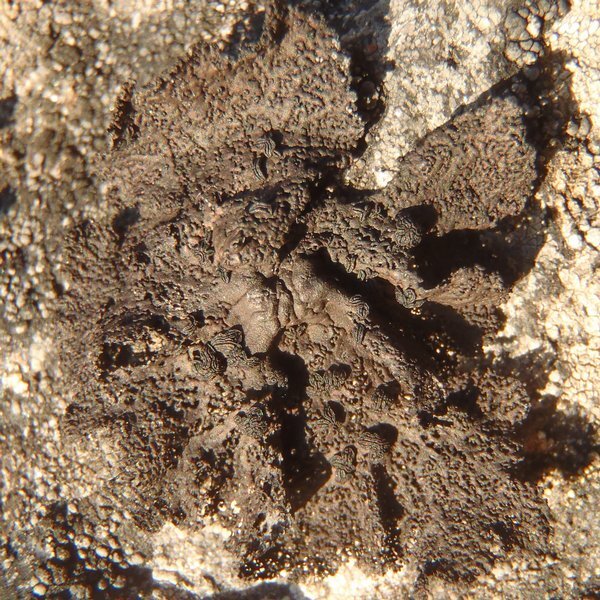

Curtis Randall Björk – CC BY-SA 4.0
British Columbia, Boundary Ranges Date: 2012-07-02 On rock, alpine ridge
Growth form: Foliose, umbilicate
Substrata: rocks
Photobiont: green algae other than Trentepohlia
Reproductive strategy: mainly sexual
Commonnes-rarity: (info)
Alpine belt: rare
Subalpine belt: extremely rare
Oromediterranean belt: extremely rare
Montane belt: absent
Submediterranean belt: absent
Padanian area: absent
Humid submediterranean belt: absent
Humid mediterranean belt: absent
Dry mediterranean belt: absent

Predictive model
| Herbarium samples |


P.L. Nimis; Owner: Department of Life Sciences, University of Trieste
Herbarium: TSB (27681)
2003/03/17
apothecia


P.L. Nimis; Owner: Department of Life Sciences, University of Trieste
Herbarium: TSB (11052)
2001/12/05
detail of lower surface


Curtis Randall Björk, - CC BY-SA 4.0
Sugarbowl-Grizzly Den Provincial Park, British Columbia, Canada
September 2017


 Index Fungorum
Index Fungorum
 GBIF
GBIF
